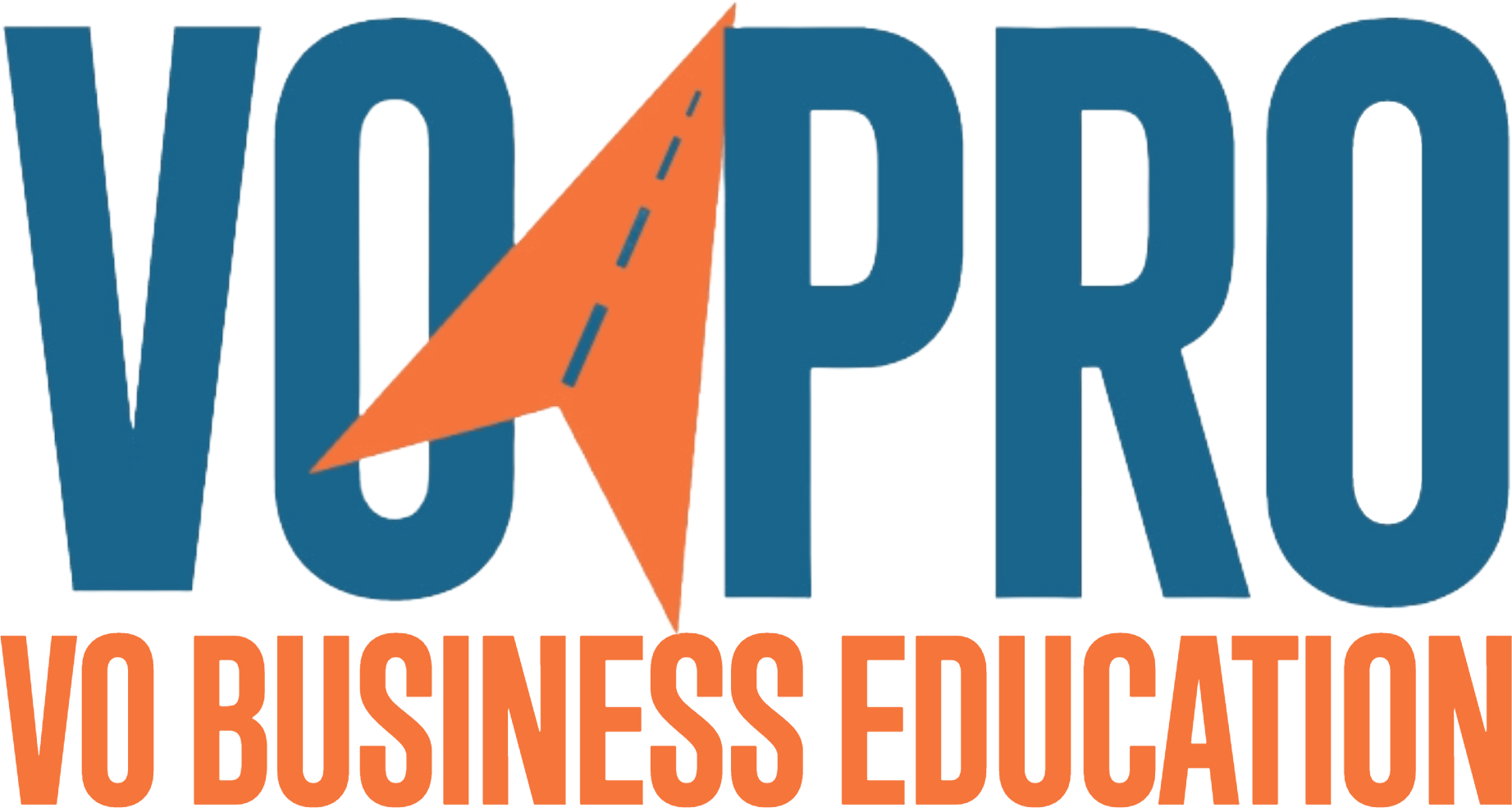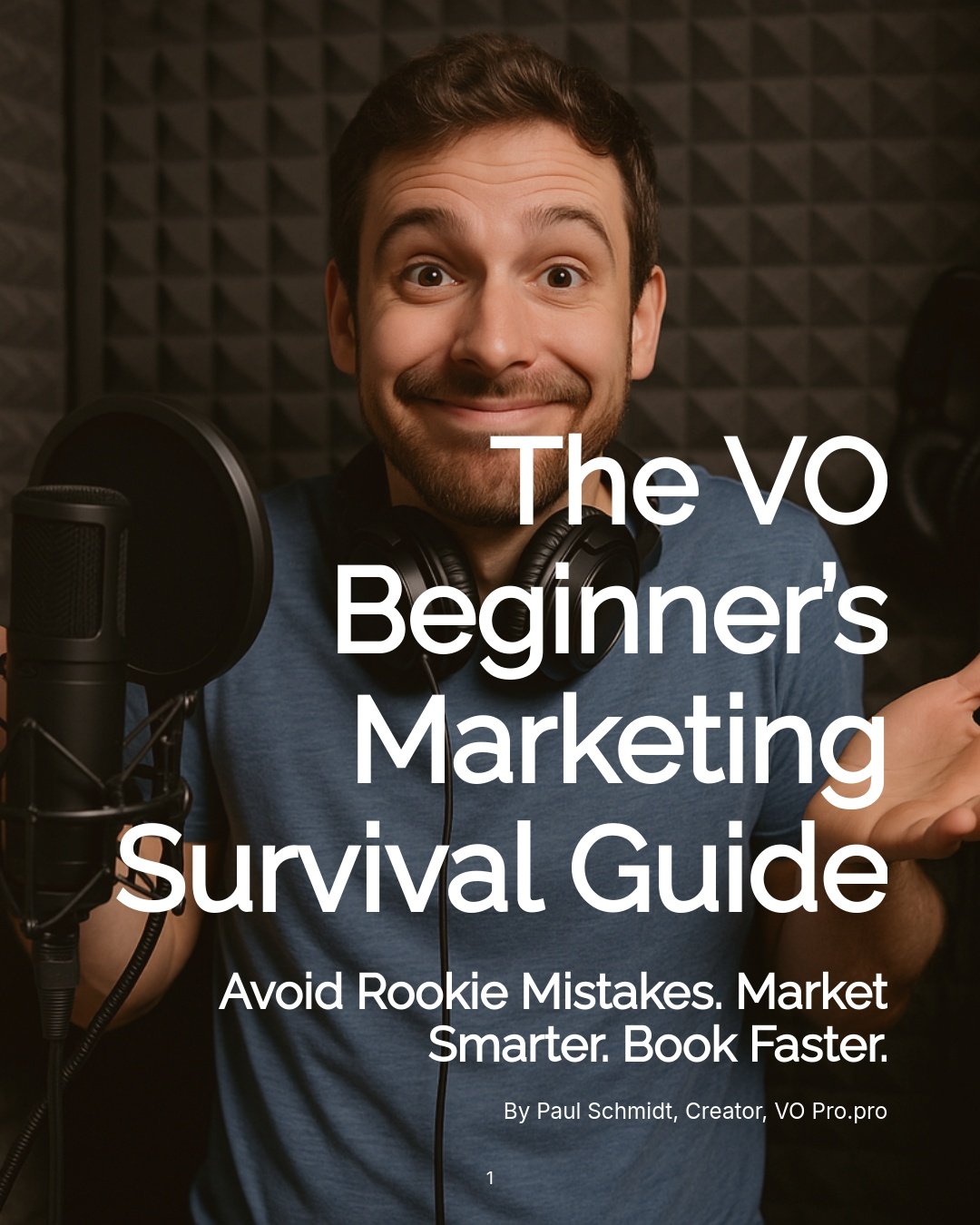The Voice Actor’s SURVIVAL Guide to Direct Marketing
Let’s be honest: marketing directly to prospects as a voice actor can feel like standing on a diving board, staring into the deep end, and wondering if there’s a shark or a nuclear bomb in the water.
You’ve probably heard about cold emailing and thought, “That’s just spam, right?” Or maybe the idea of bothering someone with an unsolicited email gives you flashbacks to awful networking mixers where everyone exchanges business cards and fake smiles.
I get it—cold emailing feels like uncharted territory for a lot of voice actors.
But here’s the truth: it’s how I built my 6-figure VO business.
Let’s start with the fear. It’s natural. Sending a cold email feels vulnerable. You’re putting yourself out there, and there’s a chance you’ll be ignored, rejected, or even—brace yourself—called annoying. But no one builds a successful career by staying in their comfort zone. The voiceover world is competitive, and if you’re not actively putting yourself in front of the right people, someone else will. That’s not meant to scare you—it’s meant to light a fire under your ass.
Let me tell you a little story about how I learned to embrace direct marketing. When I started out, I was like a lot of voice actors. I focused on auditioning through the pay-to-plays, crossing my fingers, and hoping the right job would land in my lap. And, sure, I booked a fair amount of gigs.
But the feast-or-famine cycle was brutal. One month I’d have a solid run, and the next? Not so much. I realized that if I wanted to make voiceover a sustainable career, I had to stop waiting for work to come to me. That’s when I started experimenting with cold emailing.
The first few emails I sent were… rough. I agonized over every word, worried I’d say the wrong thing or come across as unprofessional. I spent way too much time overthinking, only to hit “send” and immediately regret it.
But no one emailed back to tell me my email sucked. In fact, many actually replied—and some of those replies turned into gigs. That was my lightbulb moment. If a half-decent email could land me work, what could a great one do?
So, what makes a cold email great? It’s not about crafting the perfect sales pitch or using flashy language to impress your prospects. It’s about being human. Imagine you’re at a coffee shop, striking up a conversation with someone in line. Would you dive straight into, “Hi, I’m a voice actor, and here’s why you should hire me”? Of course not. You’d be friendly, approachable, and genuine. A cold email should feel the same way.
When you’re reaching out to prospects—whether they’re video producers, creative directors, or e-learning developers—your goal is to introduce yourself, show you understand their world -their problems and pain points, their challenges, and offer a solution. It’s not about you; it’s about them. What challenges are they facing? How can your performance and experience help solve those challenges? If you approach cold emailing with the mindset of serving your prospects rather than selling to them, you’ll immediately stand out.
What Are You Really Afraid Of?
Let’s tackle the fear of annoying people. That’s is a big one. Everybody’s worried that sending cold emails will paint them as pests. But here’s the reality: if your email is well-written, respectful and relevant - meaning it shows you understand them and their challenges, most people won’t see it as annoying. In fact, they’re often grateful. Think about it—how many times have you been overwhelmed by a project and wished someone would swoop in with the solution you needed? Your email could be that solution for someone else.
That said, there’s a right way and a wrong way to go about it. The wrong way is blasting out a generic message to hundreds of people and hoping something sticks. That’s not marketing; that’s spam. The right way is taking the time to research your prospects and tailor your message to their needs. For example, if you’re reaching out to a corporate video producer, address the challenges of corporate video producers. Show them you’ve done your homework and aren’t just shooting in the dark.
Now, I’m never gonna bullshit you—it takes time and effort. Some voice actors shy away from cold emailing because it feels like an overwhelming commitment. They imagine spending hours every day glued to their laptop, crafting email after email, with no guarantee of success.
First of all, yeah, if you don’t have a system in place, yeah it can be a massive time suck. But let me ask you this: how much time do you spend auditioning on pay-to-play sites, recording custom samples, and crossing your fingers for a job you may never get? Compare that to sending an email to a prospect who might not only hire you but also become a repeat client. Which one has the bigger long-term payoff?
I spend less than an hour a week on email marketing and it is to this day by far the most effective means I have for getting business in the door.
The Myth of Overnight Results
One thing you have to understand about direct marketing is that it’s a long game. You won’t wake up the morning after sending your first email and find your inbox flooded with job offers. It doesn’t work like that. Think of it as planting a garden. Some seeds will sprout quickly, some will take time, and some won’t grow at all. The key is consistency.
When I first started marketing directly, I didn’t book anything for weeks. I sent hundreds of emails, followed up with prospects, and got very little in return. But I didn’t give up, because I knew that every email I sent was a chance to get on someone’s radar.
And sure enough, those seeds started to sprout. I began to hear back from prospects who needed voice talent for a project, or who saved my information and reached out months later. Some of those clients have been with me for years now.
And here’s the other thing: when you don’t hear back on an audition in a few weeks, you know you didn’t book it. But I regularly have people reach out to me that never responded, often that I haven’t marketed to in years, who say something like, “Hey Paul, I think I finally have something you’d be great for.” It happens usually multiple times a quarter. Not hearing back for awhile doesn’t mean no.
The Relationship Factor
Here’s something you need to understand about direct marketing: it’s not just about booking gigs—it’s about building relationships. When you send a thoughtful, personalized email to a prospect, you’re introducing yourself as more than just a voice actor. You’re showing them you’re a consultant who understands their needs and can deliver solutions. They won’t need your services right now, but they’ll remember you when the right project comes along.
This is where follow-ups come in. If you don’t hear back from a prospect after your initial email, don’t take it personally. People are busy, and emails get lost in the shuffle. Following up is crucial and it has to be radically consistent. You can’t just follow up once. Most sales research says it takes 6-12 touches to engage a prospect. In fact, most of my best clients didn’t reply until my second, third, or sixth email or longer.
Breaking It Down
If you’re feeling overwhelmed, let’s simplify the process. Here’s how to get started with direct marketing:
Identify your target audience. Who do you want to work with? Corporate video producers, animation studios, ad agencies? Narrow it down so you can focus your efforts.
Find prospects. Use LinkedIn, industry directories, and good old-fashioned Google to find people who hire voice talent. Look for decision-makers like creative directors, producers, and casting managers.
Research your prospects. Before you email someone, take a few minutes to learn about their company and their work. This will help you personalize your message. You’re building a client avatar - your ideal (for example) ad agnecy creative director, healthcare video producer, elearning video module producer, etc.
Craft a compelling email. Keep it short. They don’t need a Dostoevsky novel. Introduce yourself, explain why you’re reaching out, and show how you can help. Keep it about them. Include a link to your demos and a clear call to action.
Follow up. If you don’t get a response in a week, follow up. Be polite and professional. Then follow up quarterly after that.
Track your efforts. Use a spreadsheet or CRM tool to keep track of who you’ve contacted, when you followed up, and any responses you’ve received.
Be consistent. Set aside time each week for marketing. It doesn’t have to be hours a day—even 30 minutes can make a big difference over time if you have a solid system.
Direct marketing isn’t magic. It’s not a shortcut to instant success. But it is one of the most effective ways to take control of your career and build a sustainable voiceover business. Yes, it’s work. Yes, it takes time. But the rewards—steady clients, repeat work, and the satisfaction of knowing you’re in control of your destiny—are worth every ounce of effort.
If really want to learn direct marketing, I recommend with obvious and unapologetic bias The VO Freedom Master Plan where we teach voice actors how to get more leads, more roster adds, more auditions, and more opportunities for recurring voiceover work by reaching out direclty to prospects. Click the link in the description and show notes. We’ll be opening up another cohort soon, so make sure to get on the waiting list to be the first to know when that happens.

